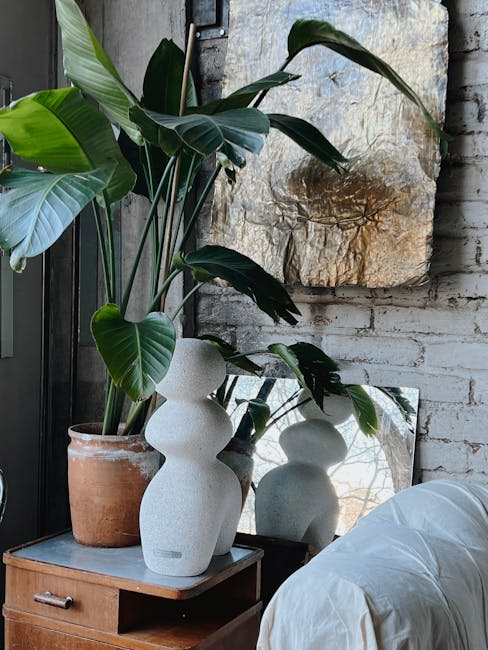How to Build a DIY Herb Garden Indoors
Introduction
Imagine fresh herbs at your fingertips, ready to elevate your cooking from ordinary to extraordinary. You don’t need a sprawling outdoor garden to enjoy the flavors and aromas of homegrown herbs. Building a DIY herb garden indoors is surprisingly easy, affordable, and rewarding. This guide will walk you through the process, helping you create a thriving indoor oasis, even with limited space or experience. Get ready to snip, savor, and enjoy the benefits of fresh, organic herbs grown right in your home!
Getting Started: Planning Your Indoor Herb Garden
Choosing the Right Herbs
Not all herbs thrive indoors. Consider herbs that adapt well to lower light conditions and container growing. Here are some excellent choices:
- Basil: A culinary staple, basil appreciates warmth and plenty of light (but can tolerate slightly less).
- Mint: Easy to grow and highly aromatic, mint thrives indoors, but contain it! It spreads rapidly.
- Chives: A mild onion flavor adds zest to dishes. Chives tolerate cooler temperatures.
- Parsley: Available in curly and flat-leaf varieties, parsley prefers bright, indirect light.
- Oregano: Pungent and flavorful, oregano is relatively low-maintenance.
- Thyme: A versatile herb with a woody aroma, thyme does well in well-draining soil.
- Rosemary: Prefers drier conditions and plenty of sunlight; provide excellent drainage.
Selecting the Perfect Location
Light is crucial for indoor herb gardens. Aim for a location that receives at least 6 hours of sunlight per day. A south-facing window is ideal. If natural light is insufficient, consider supplemental grow lights. Remember to consider factors like humidity and temperature as well.
Choosing the Right Containers
Drainage is essential! Select containers with drainage holes to prevent waterlogging. Terra cotta pots are a great option as they allow the soil to breathe. Consider these container types:
- Individual Pots: Allows for customizing soil and watering for each herb.
- Window Boxes: A visually appealing way to grow multiple herbs in a single container.
- Vertical Garden Planters: Perfect for small spaces, maximizing vertical real estate.
- Upcycled Containers: Get creative! Use old mason jars, teacups, or even repurposed plastic containers.
Building Your DIY Herb Garden: Step-by-Step
Gathering Your Supplies
Before you start planting, make sure you have all the necessary materials:
- Herb seeds or seedlings
- Potting mix (specifically formulated for containers)
- Containers with drainage holes
- Watering can or spray bottle
- Small trowel or gardening shovel
- Optional: Fertilizer (organic liquid fertilizer is recommended)
- Optional: Grow lights
Planting Your Herbs
- Prepare the Containers: Fill each container with potting mix, leaving about an inch of space at the top.
- Plant Seeds or Seedlings:
- Seeds: Follow the instructions on the seed packet for planting depth and spacing.
- Seedlings: Gently remove the seedling from its container and loosen the roots. Plant it at the same depth it was in the original container.
- Water Thoroughly: Water gently until the soil is moist but not soggy.
- Label Your Herbs: Use plant markers to identify each herb.
Caring for Your Indoor Herb Garden
Proper care is essential for a thriving indoor herb garden:
- Watering: Water when the top inch of soil feels dry. Avoid overwatering, which can lead to root rot.
- Light: Provide adequate light. If using grow lights, keep them on for 12-16 hours per day.
- Fertilizing: Fertilize every 2-4 weeks with a diluted organic liquid fertilizer.
- Pruning: Regularly prune your herbs to encourage bushier growth and prevent them from becoming leggy.
- Pest Control: Inspect your plants regularly for pests. If you find any, treat them with an organic insecticidal soap.
- Humidity: Maintain adequate humidity, especially during dry winter months. You can use a humidifier or place the pots on a tray filled with pebbles and water.
Troubleshooting Common Problems
Yellowing Leaves
Yellowing leaves can indicate overwatering, underwatering, or nutrient deficiencies. Adjust your watering schedule and consider fertilizing.
Leggy Growth
Leggy growth is often caused by insufficient light. Provide more light or move your plants to a brighter location.
Pest Infestations
Common indoor herb garden pests include aphids, spider mites, and whiteflies. Treat infestations with organic insecticidal soap.
Conclusion
Building a DIY herb garden indoors is a rewarding and enjoyable experience. With a little planning and care, you can enjoy fresh, flavorful herbs year-round, right from the comfort of your own home. So, gather your supplies, choose your favorite herbs, and get ready to elevate your culinary creations!














Post Comment